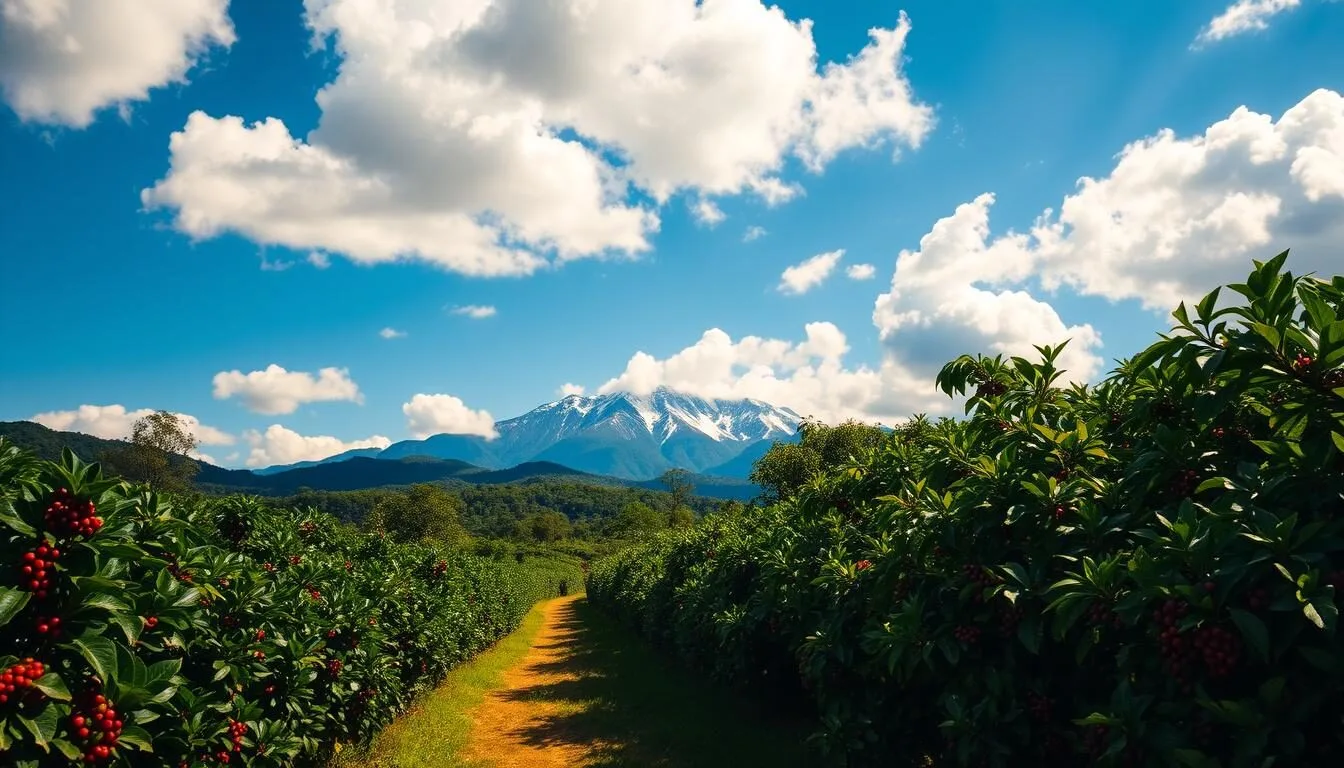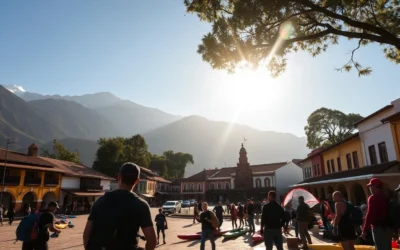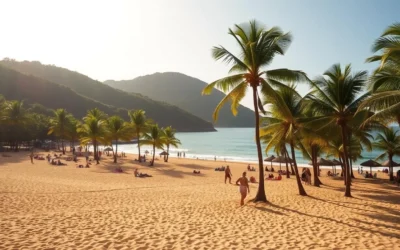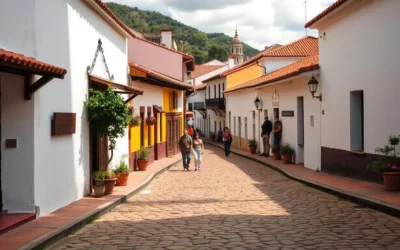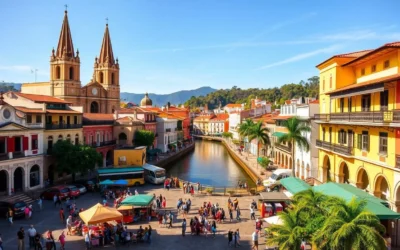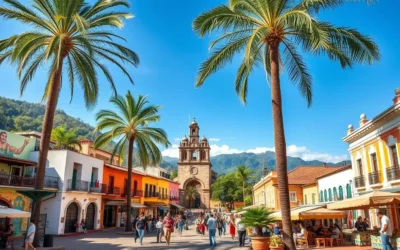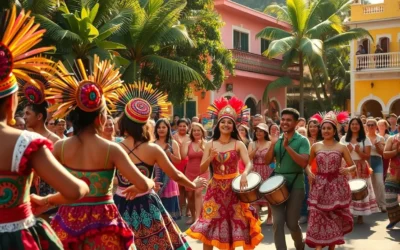✓ Accommodations ✓ Flights ✓ Rental Cars ✓ Tours & Activities
Did you know that Colombia, a country fondly referred to as ‘locombia’ due to its diverse and sometimes ‘mad’ weather, has two distinct seasons: the dry season and the rainy season? The dry season occurs from December to February and July to August, while the rainy season takes place from April to May and October to November.
Understanding the country’s diverse climate patterns is crucial for planning your trip to Colombia. The climate varies dramatically by region rather than following clear-cut seasons. You can experience a tropical climate in the Amazon and Caribbean regions, a wet climate in the Pacific region, and a wintry climate in the Andean region during its coldest months.
To make the most of your visit, it’s essential to determine the best time to visit Colombia based on the region you plan to explore. This guide will help you plan a weather-savvy trip by breaking down the country’s climate patterns by region and season.
Understanding Colombia’s Diverse Climate Zones
With its position straddling the equator, Colombia boasts a range of climates across its different regions. You can experience a unique climate in each area, from the warm tropical coast to the cool mountainous regions.

Warm and Tropical Caribbean Coast
The Caribbean Coast enjoys a warm tropical climate with temperatures typically ranging from 75-88°F (24-31°C). You can expect a distinct dry season perfect for beach activities and a wet season that brings brief but intense afternoon showers.
Cool Mountain Climate of the Andean Region
In the Andean Region, altitude dramatically affects the climate. You will find cooler temperatures between 46-68°F (8-20°C) in higher elevations like Bogotá, while Medellín enjoys its famous “eternal spring” climate with consistent mild temperatures year-round.
Hot and Humid Amazon Rainforest
The Amazon region presents a hot and humid tropical climate with temperatures between 66-86°F (19-30°C) and high rainfall throughout the year. There are slightly drier periods that can make travel more comfortable.
The Wet and Wild Pacific Coast
The Pacific Coast experiences some of Colombia’s heaviest rainfall, with up to 400 inches annually in some areas. The best time to visit is during brief dry periods between January-March and July-August.
Understanding these climate zones is crucial to determining the best time to visit different areas of the country. You can plan your trip according to your preferences for weather and climate.
Colombia’s Dry and Rainy Seasons Explained
As you plan your trip to Colombia, it’s essential to grasp the country’s seasonal patterns to make the most of your visit. Colombia experiences two distinct dry seasons and two rainy seasons throughout the year, though the intensity and timing can vary slightly by region.
December to March: Primary Dry Season
The primary dry season, spanning from December to March, brings the most sunshine and least rainfall across most of the country. These months are ideal for beach vacations and outdoor explorations, with comfortable days averaging 7-8 hours of sunshine.
April to June: First Rainy Season
From April to June, Colombia experiences its first rainy season. Afternoon showers become more frequent, though mornings often remain clear, allowing for planned activities with some flexibility.
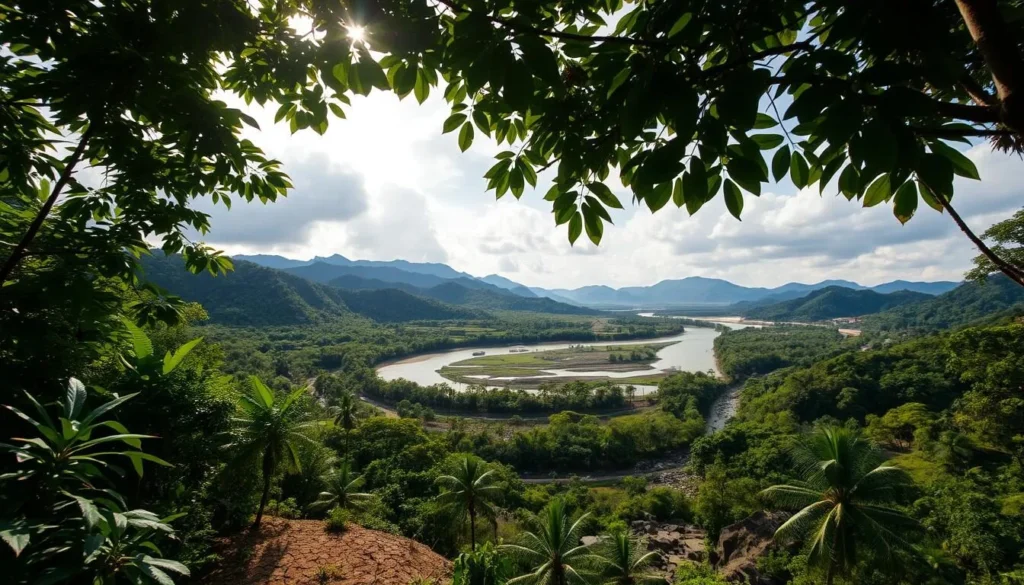
July to August: Mid-Year Dry Season
The mid-year dry season offers a welcome break from the rain, especially in the Andean and Caribbean regions. This period creates a popular travel window during the Northern Hemisphere’s summer vacation months.
September to November: Second Rainy Season
September to November brings the second and often more intense rainy season. While this period can bring heavier rainfall and occasional storms, it transforms landscapes into lush green paradises, offering unique experiences.
| Season | Months | Characteristics |
|---|---|---|
| Primary Dry Season | December to March | Most sunshine, least rainfall |
| First Rainy Season | April to June | Afternoon showers, clear mornings |
| Mid-Year Dry Season | July to August | Popular travel window |
| Second Rainy Season | September to November | Heavier rainfall, lush landscapes |
Understanding these seasonal patterns will help you plan your trip according to your preferences, whether you’re looking for sunny days or lush landscapes.
Best Months to Visit Colombia’s Caribbean Coast
Colombia’s Caribbean coast offers a unique blend of culture, history, and natural beauty. The region is a fantastic destination for beach lovers and festival enthusiasts alike.
Cartagena: Colonial Charm Year-Round
Cartagena, with its colorful colonial architecture and vibrant atmosphere, is a must-visit. The city enjoys pleasant weather year-round, making it an ideal destination for travelers. January and February offer the perfect balance of sunny days and comfortable humidity levels for exploring the walled city.
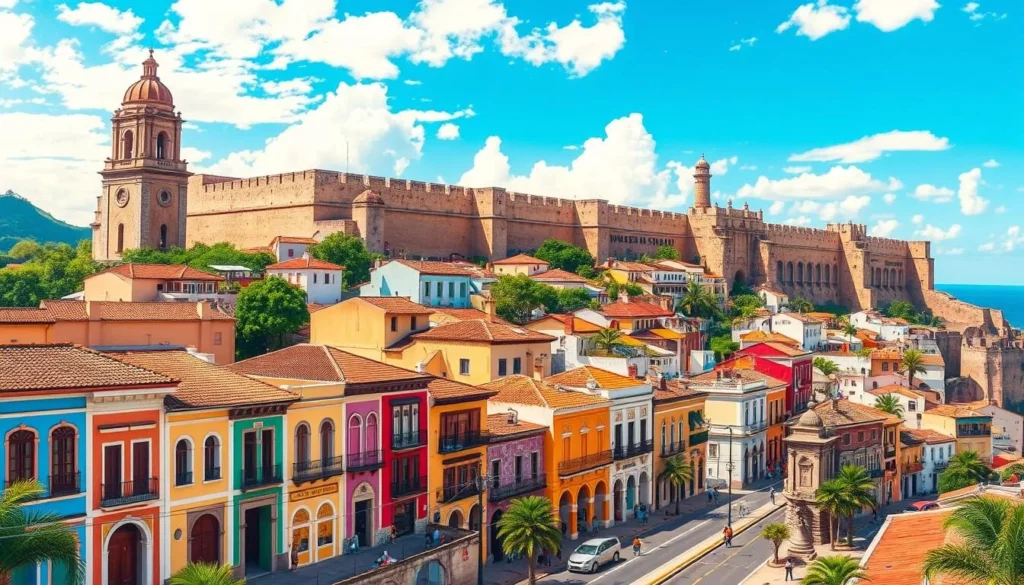
Santa Marta and Tayrona National Park
Santa Marta and Tayrona National Park are best visited during the dry season, from December to March. Clear skies highlight the stunning contrast between the Sierra Nevada mountains and the Caribbean beaches. Hiking trails remain accessible, making it perfect for outdoor enthusiasts.
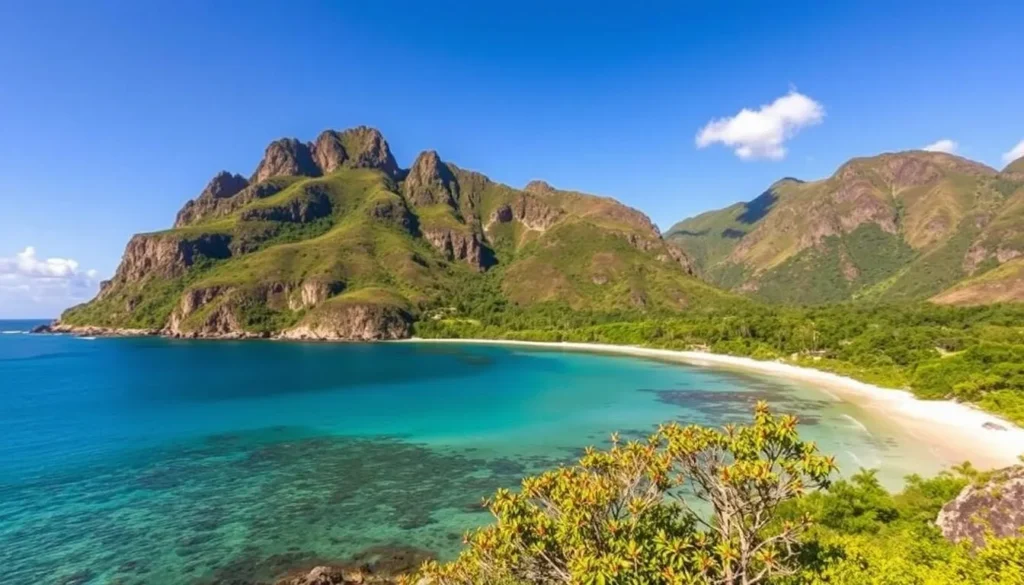
Barranquilla: Timing for Carnival Season
If you’re looking for a vibrant cultural experience, visit Barranquilla during its famous Carnival in February. The dry season coincides perfectly with the Carnival, allowing you to fully immerse yourself in the colorful parades and street parties without weather concerns.
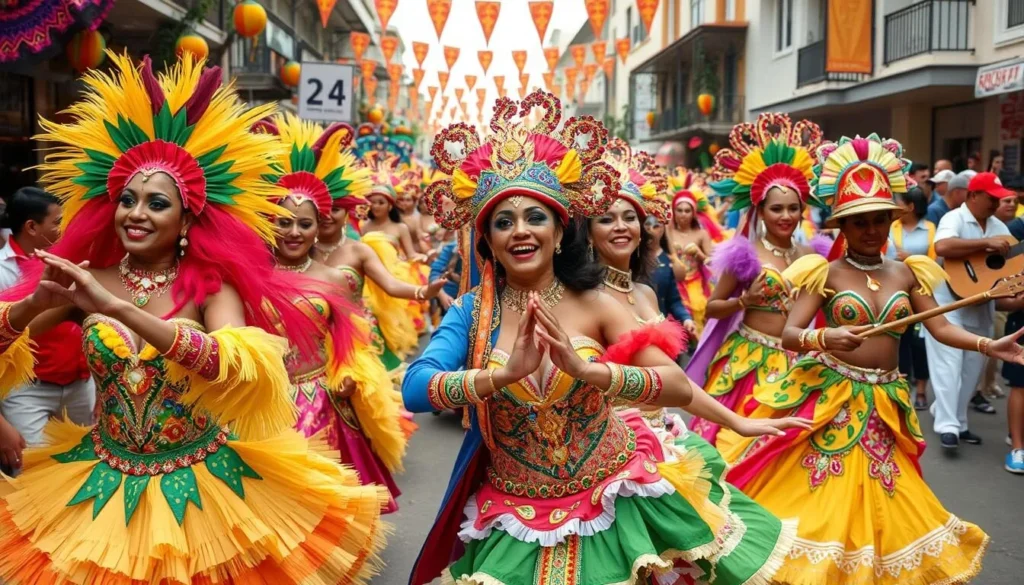
Ideal Times for Exploring the Andean Region
Colombia’s Andean region offers a diverse array of experiences for travelers, from vibrant cities to lush coffee plantations. With its varied elevations and microclimates, this region provides a unique travel experience throughout the year.
Bogotá: The High-Altitude Capital
Bogotá, sitting at 8,660 feet above sea level, experiences cooler temperatures than other Colombian cities. The most stable and pleasant weather occurs from December to March, making it ideal for exploring La Candelaria and enjoying spectacular views from Monserrate.
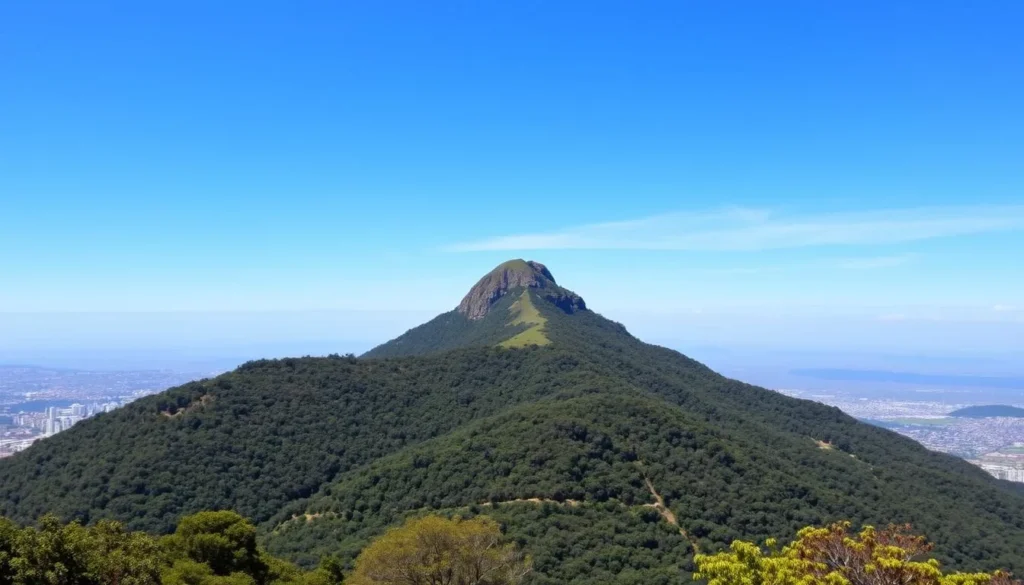
Medellín: The City of Eternal Spring
Medellín lives up to its nickname with consistently pleasant temperatures throughout the year. January through March offers the least rainfall and coincides with various cultural events, making it a great time to visit.
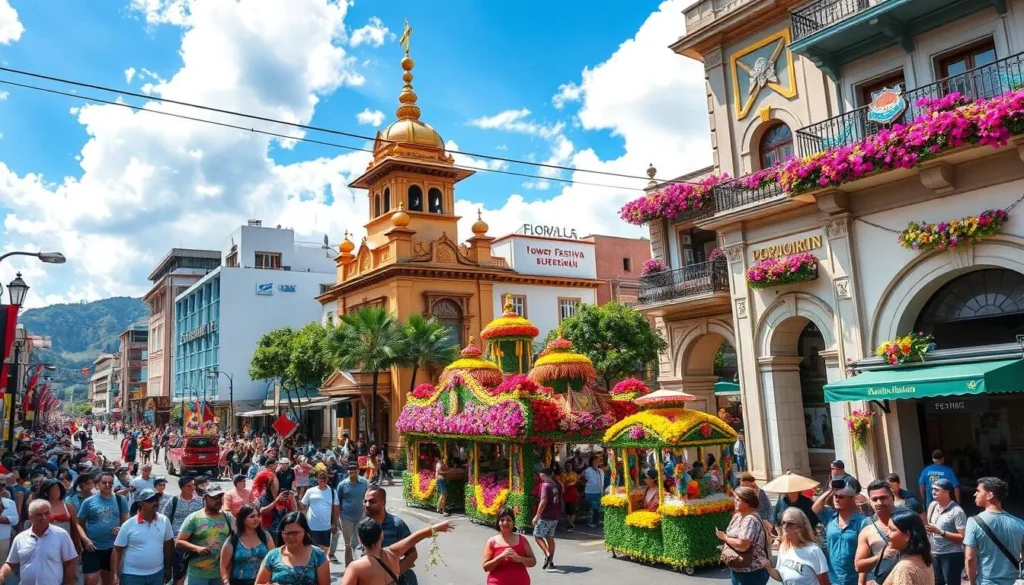
The Coffee Triangle: Harvest Seasons
The Coffee Region, including towns like Salento, Armenia, and Manizales, is most enjoyable during the dry seasons. For coffee enthusiasts, planning your trip around the main harvest seasons (April-May and October-December) provides unique opportunities to witness coffee production firsthand.
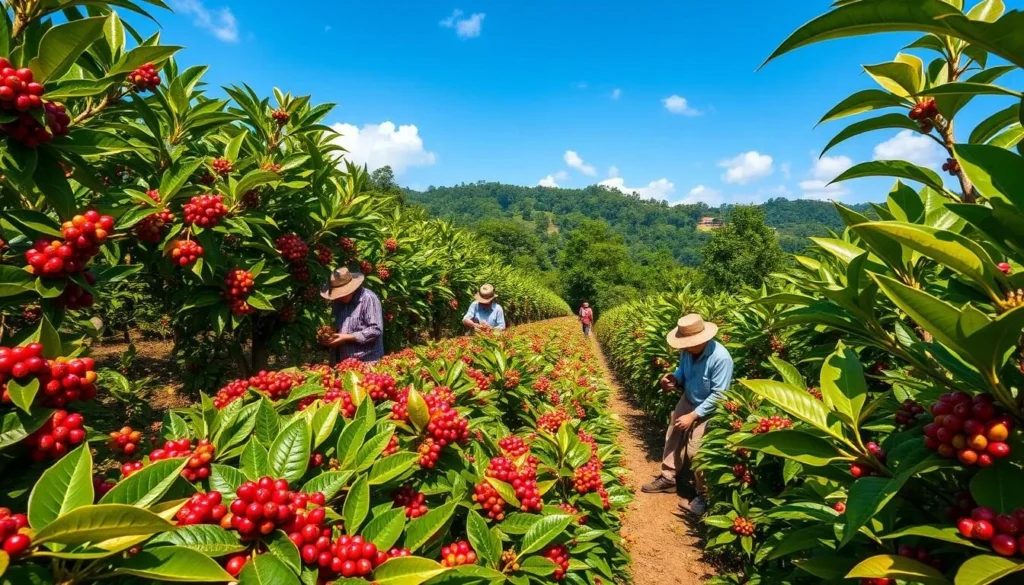
Whether you’re exploring the cities, towns, or coffee regions, the Andean region of Colombia is a must-visit destination. With its rich cultural heritage and stunning landscapes, you can have a memorable trip by planning around the best times to visit.
Colombia: Best Months for a Weather-Savvy Trip by Region
When planning a trip to Colombia, understanding the best times to visit different regions can significantly enhance your travel experience. Colombia’s diverse climate zones mean that the ideal travel months vary greatly depending on your destination within the country.
January-February: Perfect for Caribbean Beaches
These months represent the peak of Colombia’s primary dry season, making them ideal for visiting the Caribbean coast. You can enjoy nearly guaranteed sunshine, calm seas, and perfect conditions for beach activities and water sports.
March-April: Exploring Cities Before Peak Rains
This period offers a great balance for visiting Colombia’s major cities before the heaviest rains arrive. The Andean region experiences comfortable weather, and you’ll encounter slightly fewer tourists than during the peak January-February period.
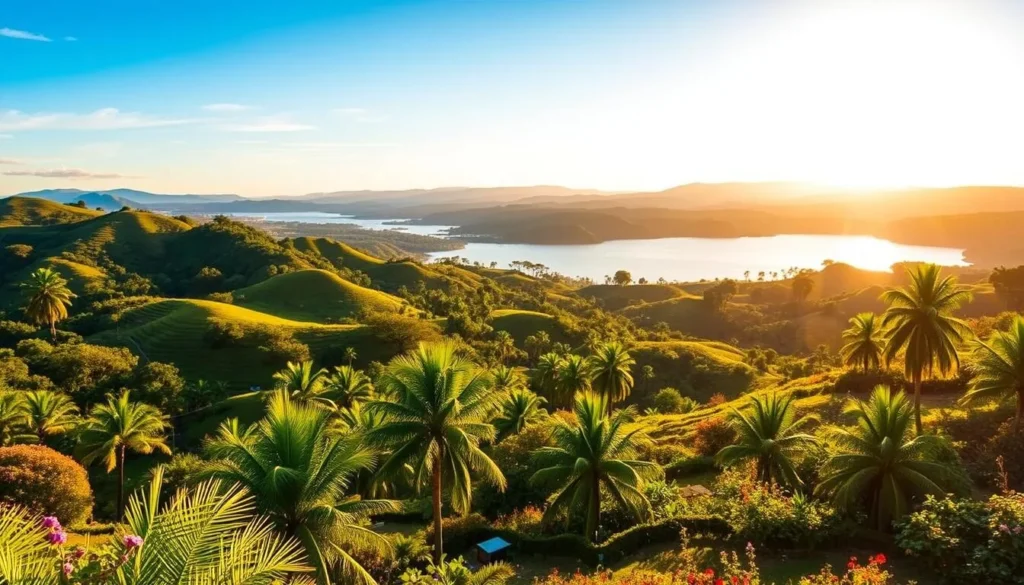
July-August: Mid-Year Sweet Spot
The July-August window is a perfect mid-year sweet spot for visiting Colombia. This secondary dry season brings good weather across most regions, coinciding with Northern Hemisphere summer holidays and special events like the Medellín Flower Festival.
December: Festive Season Weather Considerations
December combines festive season celebrations with the beginning of the dry season, creating magical days throughout Colombia. You can enjoy Christmas lights in Medellín, beach parties along the Caribbean coast, and generally favorable weather for multi-region travel.
| Region | Best Months to Visit | Weather Conditions |
|---|---|---|
| Caribbean Coast | January-February | Dry, sunny, calm seas |
| Andean Region | March-April | Comfortable, fewer tourists |
| Most Regions | July-August | Dry, good weather, special events |
| Multi-region | December | Festive, beginning of dry season |
Planning Around Colombia’s Major Festivals
The best time to visit Colombia is often tied to its festivals, which showcase the country’s rich cultural heritage. Colombia’s vibrant cultural calendar features numerous events and festivals throughout the year, and planning your visit around these celebrations can significantly enhance your travel experiences.
February: Barranquilla Carnival Weather
February brings the world-famous Barranquilla Carnival, Colombia’s largest festival, which benefits from the dry season weather with sunny days perfect for the outdoor parades and street parties. The dry weather ensures that the festivities are not dampened by rain, making it an ideal time to experience the local culture.
August: Medellín Flower Festival Climate
The Medellín Flower Festival in August coincides with the mid-year dry season, offering pleasant days with temperatures around 70-75°F (21-24°C) ideal for enjoying the spectacular flower displays, parades, and outdoor concerts throughout the city. This weather creates a perfect backdrop for the festival’s events.
December: Festival of Lights Weather Conditions
December’s Festival of Lights (Alumbrado Navideño) in Medellín and similar celebrations in other Colombian cities benefit from the start of the dry season, creating magical evenings for viewing the elaborate light displays without the interruption of rain. The dry weather adds to the festive atmosphere, making it a great time to visit.
| Festival | Month | Weather Conditions |
|---|---|---|
| Barranquilla Carnival | February | Dry season, sunny days |
| Medellín Flower Festival | August | Mid-year dry season, pleasant temperatures |
| Festival of Lights | December | Start of dry season, magical evenings |
When planning your tour around these cultural highlights, consider booking accommodations well in advance as cities hosting major events can become crowded, with prices rising significantly during these popular times to visit Colombia.
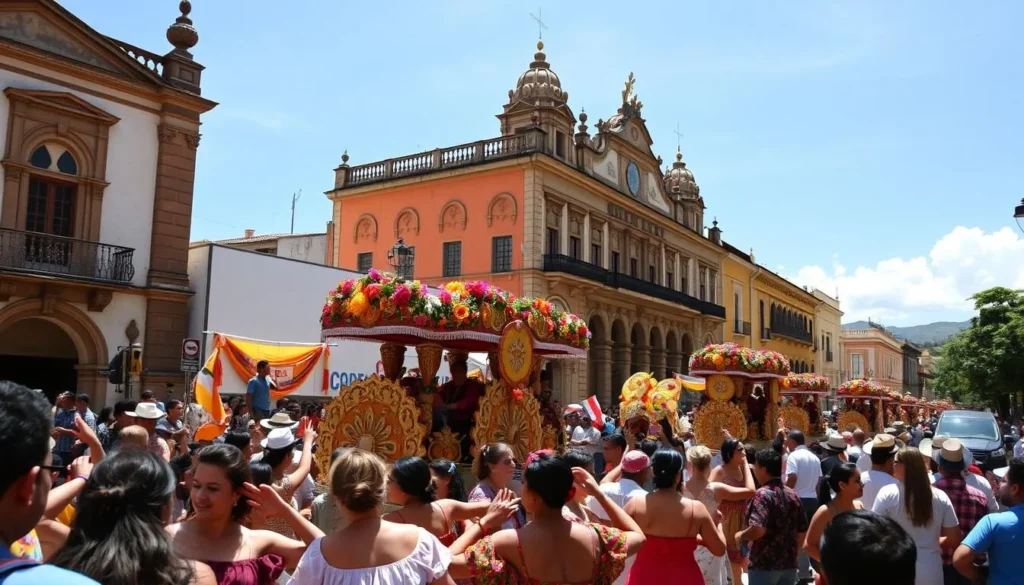
Weather Considerations for Outdoor Activities
When planning a trip to Colombia, understanding the weather is crucial for making the most of your outdoor activities. The country’s diverse climate zones offer a range of experiences, from hiking and trekking to relaxing on beautiful beaches.
Optimal Seasons for Hiking and Trekking
For hiking and trekking enthusiasts, the dry periods of December-March and July-August provide optimal conditions for exploring Colombia’s diverse trails. During these times, clear skies enhance mountain views, and drier trails reduce safety concerns.
Sunshine Predictions for Beach Vacations
Beach vacations along the Caribbean coast shine during the dry season (December-March), with 7-8 hours of daily sunshine and minimal rain interruptions. Popular destinations like Tayrona National Park offer unforgettable experiences with their combination of jungle and pristine beaches.
Wildlife Viewing Opportunities
Wildlife viewing opportunities vary by region. The Amazon experiences slightly lower rainfall from July to August, making this period ideal for spotting diverse species while navigating more accessible trails and waterways.
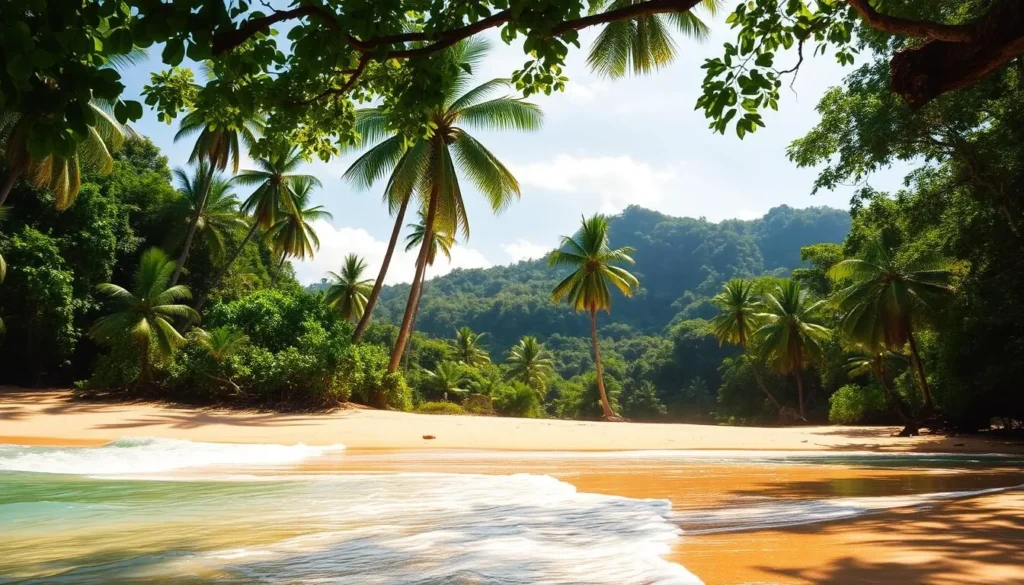
When planning your outdoor tour, remember that weather patterns can vary. Gathering specific information about your destination and building flexibility into your trip itinerary is valuable advice for visiting Colombia during transitional months.
Conclusion: Your Perfect Colombian Weather Window
Colombia’s climate can be as diverse as its culture, making it essential to choose the right time for your visit. The country’s varied regions offer different experiences based on the time of year you travel. Generally, Colombia has a tropical climate with two main seasons: the dry season and the rainy season.
The dry season, typically from December to March and July to August, is considered the best time to visit for outdoor activities and festivals. However, traveling during the rainy season can also be rewarding, with lush landscapes, fewer crowds, and lower prices. Each region has its own microclimate, so it’s crucial to plan according to the specific areas you wish to explore.
Whether you choose to visit during the dry season or the rainy season, proper planning and flexible travel advice will ensure a memorable trip. Pack for variable weather, build in buffer days for unexpected rainfall, and enjoy the unique experiences Colombia has to offer in every season.
—
The above is subject to change.
Check back often to TRAVEL.COM for the latest travel tips and deals.
